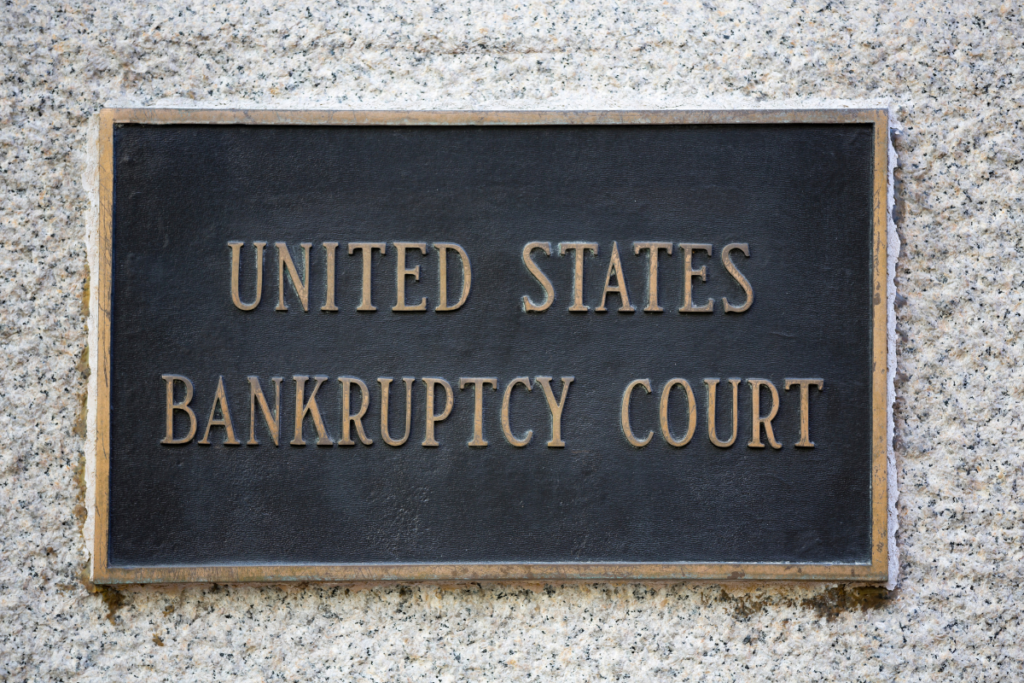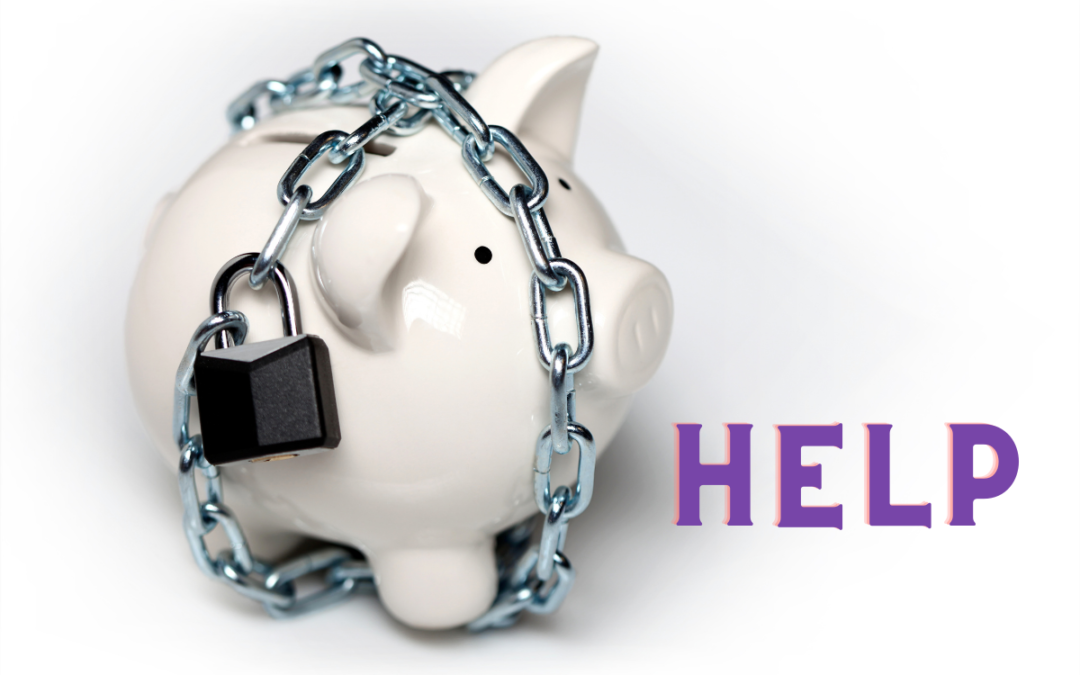Have you recently begun receiving debt collection calls? Do you have letters in your mailbox from addresses like PO Box 1120 Charlotte NC demanding payments? Then this step-by-step guide to filing Chapter 7 bankruptcy might be just what you need.
No time to read now? Pin this and save it for later.
You may have used the 11-word phrase to stop debt collectors, but think about the debt in the back of your mind. It may be time for you to look into what options you have available to you. While bankruptcy can be a scary or intimidating thought, it could be something that might save your financial future.
Here is everything you need to know about filing for bankruptcy and the average timeline for Chapter 7 bankruptcy cases.
Start by taking the Chapter 7 Means Test
Taking a “Should I File For Bankruptcy Quiz” can help you better understand if bankruptcy is a viable option for you. If you have explored other debt-relief options, you may be confident that you want to go ahead and file for Chapter 7 bankruptcy. But how do you file your case, and how long does the entire process take?
To qualify for a bankruptcy discharge under Chapter 7, you need to meet certain income qualifications. A bankruptcy discharge relieves you of the liability to repay your existing debts. If you are not eligible for bankruptcy discharge, you can choose to file bankruptcy under Chapter 13.
Chapter 13 helps you overcome debt by developing a workable repayment plan. The court monitors this repayment plan, and missing a payment could result in the court dismissing your case.
If you pass the means test, you are eligible for Chapter 7 bankruptcy discharge. If the results show “fail,” it shows your income is more than the median income in your state. However, if your disposable income is low, you might still qualify for a discharge.
If you’re looking into other forms of bankruptcy, make sure you understand their differences. For example, Chapter 11 bankruptcy looks extremely different from Chapter 7 and Chapter 13 bankruptcy. Keep this in mind as you move forward.
Are you ready to change your relationship with money but don’t know how? I’ve got you, Boo! Read this.
How to File Your Chapter 7 Bankruptcy Petition
Ready to continue with the step-by-step guide to filing Chapter 7 bankruptcy?
If you do pass the Chapter 7 Mean Test, you can begin working on filing your case. Before filing your petition, you need to complete a Credit Counseling Course. You can take the class online at least 180 days before filing your case. Ensure you choose a course from an institution accredited by the US Trustee’s Office.
Next, file your bankruptcy petition with the Certification of Completion from the Credit Course you took. Note that you will be required to pay a filing fee and to file your petition alongside schedules and statements.
There are numerous forms you will need to file showing your assets, income, debts, etc. Therefore, hiring a bankruptcy attorney is helpful. Your lawyer can help you prepare and file all the documents you need – and file them on time – for your Chapter 7 case.
If you would like to file the case by yourself, you can get the official bankruptcy forms on the United States Courts Website.
NOTE: Keeping up with court proceedings can be hectic. Stay updated by signing up to receive email notifications rather than mail notices when a document is filed in your case.
It’s also important to keep in mind that bankruptcy costs different amounts in different areas. For instance, if you’re wondering what it cost to file for bankruptcy in Tennessee, you will need to look up state-specific information to know more about how much the process would cost.
Enroll and Complete Your Debtor Education Course
After completing a Credit Counseling Course, you will need to enroll and complete a Debtor Education Course. If you fail to complete the course or complete it and fail to submit your completion certificate on time, you risk the court dismissing your case.
Fixing the problem will be costly since you must file a motion with the bankruptcy court and repay a bankruptcy filing fee. Besides, you risk not getting a bankruptcy discharge. So, you will still be liable to settle your outstanding debts. Therefore, it is essential to ensure you complete this course and submit the certificate on time.
Submit These Documents to Your Chapter 7 Trustee
As the court processes your case, you will have a Chapter 7 Trustee assigned to you. You’ll also be asked to submit documents to the trustee to prove the accuracy of the information you provided. The trustee will need all the financial paperwork to prove bankruptcy.
In most cases, the bankruptcy court will schedule a bankruptcy hearing for your case between 20 and 40 days after filing your petition. The court will issue a notice to you and other interested parties with the name and address of the trustee assigned to your case. The notice will also include the details of your 341 hearing, i.e., the date, time, and address.
Besides copies of your tax returns for the two previous years, the trustee is allowed to request copies of any documents they deem necessary. Your trustee will communicate about the list of documents they require and how to submit them. You must submit these documents to your trustee before attending your hearing.
Attend the 341 First Meeting of Creditors
As a debtor, you MUST attend the first meeting of creditors in your bankruptcy proceeding. This meeting of your creditors is held outside the judge’s presence within 21 and 50 days after filing your petition and is conducted by the trustee.
During the hearing, your Chapter 7 trustee will need to verify your identity. So, you need to bring with you your identification documents like your Social Security Card and original driving license. If you have misplaced any of these documents, call your trustee’s office in advance, explain your situation and inquire what other documentation can be used to verify your identity.
The meeting is short and will take about ten minutes. The trustee will place you under oath and ask more about your case during the hearing. If you are nervous about the meeting, you can arrive before your hearing and attend other hearings to familiarize yourself with the questions your trustee is likely to ask.
Wait for the Court’s Judgment
The duration of your case varies and depends on the particulars of the case. For example, if your case doesn’t involve any assets, it could be completed between four and six months. A no-asset bankruptcy case means you don’t own any property your trustee can seize and sell to pay off your creditors. Thus, within six months, you can get your bankruptcy discharge and forget your debts.
Some people may file Chapter 7 bankruptcy after a Chapter 13 dismissal because they now qualify. That said, many people who file bankruptcy under Chapter 7 file no-asset cases. However, under Chapter 7, there are bankruptcy exemptions that protect the equity in particular assets.

If you have adhered to all the steps above and completed the two-credit courses, that’s it! Wait for the court judgment. In most no-asset cases, the court can issue bankruptcy discharge within 60 days. However, a creditor or trustee can sometimes object to the discharge, dragging the case longer.
Make the Most of Your Chapter 7 Bankruptcy Discharge
If your case was successful and the court grants you a bankruptcy discharge, you can take advantage of it and use it to rebuild your credit. Chapter 7 offers you the chance to start afresh and make better financial decisions. Use the knowledge you obtained from the Debtor Education Course to make wiser decisions and keep your finances on track.
Get Reliable Help Filing Your Chapter 7 Bankruptcy Case
After going through the step-by-step guide to filing Chapter 7 bankruptcy, it’s easy to assume filing is a breeze. Well, bankruptcy cases are easy, especially no-asset cases. However, without the proper understanding of the process, complications may arise that could lead to your case being dismissed.
So do your research and then find reliable help and advice from professionals before deciding to move forward with a bankruptcy filing.
No matter what current state of disaster your find your finances in, you can turn things around starting now! Listen to this episode of The Purpose of Money Podcast to learn what to do.

